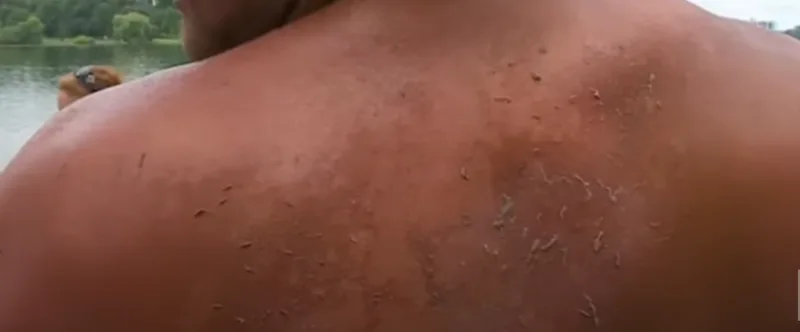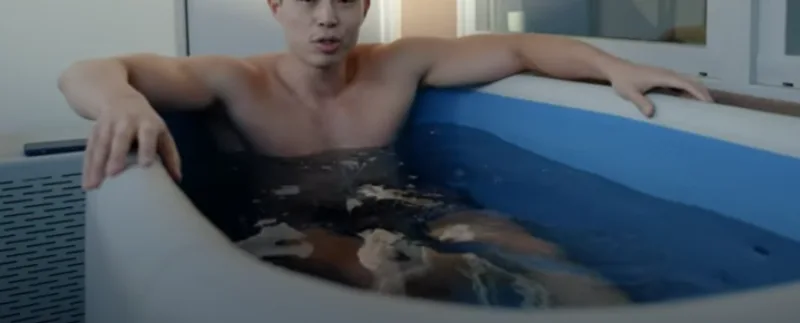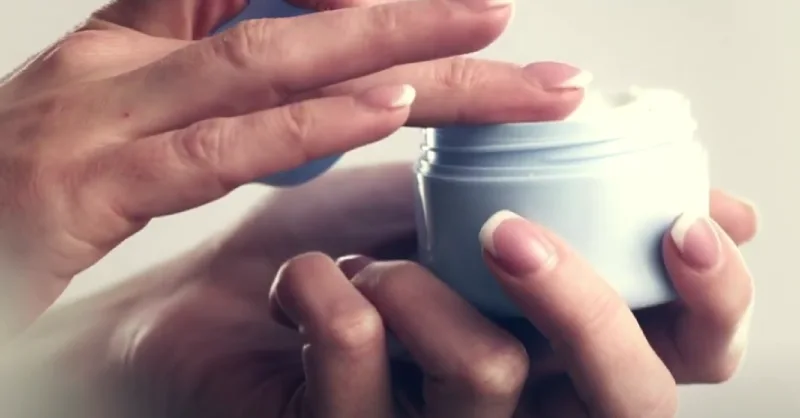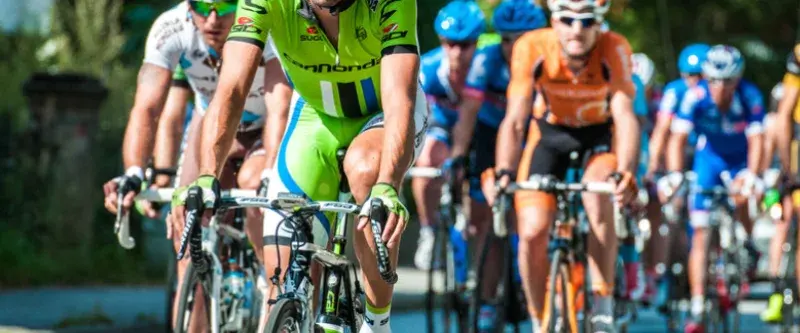When skin peels because of sunburn, the underlying layers are more vulnerable to bacteria and other pathogens, increasing the risk of infection. Scarring can sometimes occur after severe sunburns that cause significant peeling, especially if the skin is not adequately cared for. Scarring can be a cosmetic concern and may also affect the skin’s texture and elasticity.
Apply aloe vera or soy-based moisturizer to the affected area. Slathering on moisturizer keeps the skin hydrated and restores the skin barrier under those dead cells. Hydrating your skin prevents peeling and helps curb peeling.
This blog post offers some practical ways to help stop that peeling from sunburn for cyclists and get your skin back to feeling its best.
How To Stop Skin Peeling From Sunburn For Cyclist: 9 Effective Ways

Cycling under the sun can invigorate, but it also puts your skin at risk of sunburn. Sunburns can lead to peeling skin, which is uncomfortable and potentially damaging. For cyclists who spend long hours riding in the sun, addressing sunburn promptly and effectively is crucial. Here are some practical steps for cyclists to stop skin peeling from sunburn.
Aloe Vera
Aloe vera is known for its relaxing effects, which make it a great sunburn remedy. Its cooling effect reduces inflammation, providing immediate relief from the discomfort of sunburn. Aloe vera also aids skin regeneration, which is essential when dealing with peeling skin.
- Use Fresh Aloe: If possible, use fresh aloe vera directly from the plant. Cut an aloe leaf, squeeze the gel, and gently apply it to the sunburned areas.
- Aloe-Based Products: Alternatively, use over-the-counter aloe vera gels that contain a high concentration of aloe. Apply generously to the affected skin after showering.
Moisturizers
Moisturizers are crucial in preventing and treating peeling skin. This keeps the skin hydrated, aiding in the healing process.
Choosing the Right Moisturizer:
- Look for Ingredients: Opt for moisturizers containing ingredients like hyaluronic acid, glycerin, or ceramides, which help to restore the skin’s natural barrier.
- Avoid Fragrances: Choose products free from fragrances and harsh chemicals to avoid further irritation.
Application Tips
- Apply moisturizer immediately after using aloe vera and bathing to trap moisture in the skin.
- Reapply several times a day as needed, especially after sweating or washing.
Stay Hydrated
Staying hydrated is crucial for skin peeling from sunburn. When sunburned, your skin loses moisture; drinking plenty of fluids helps replenish this loss. Proper hydration supports your body’s natural healing processes and can reduce the severity of peeling.
- Drink Water: Drink eight to ten glasses of water per day. Increase your intake if you’re sweating or have been exposed to high temperatures.
- Electrolytes: To replenish lost salts and minerals, consider sports drinks or coconut water that contain electrolytes.
Shower or Bathe in Cool Water

A cool shower or bath helps soothe the peeling skin and reduce sunburn-related inflammation. Hot water can exacerbate sunburn symptoms, so it’s essential to avoid it.
- Temperature: Use lukewarm to cool water when bathing. Hot water can cause skin to lose its natural oils and, worse, peel.
- Duration: Keep showers or baths short to avoid further drying out the skin.
Additional Soothing Measures
- Add Oatmeal: Adding colloidal oatmeal to your bath can provide additional relief and help to reduce itching and irritation.
- Avoid Harsh Soaps: Use mild, fragrance-free soaps or body washes to prevent further irritation.
Don’t Exfoliate
Exfoliating sunburned skin is a bad idea. Exfoliation removes dead skin cells, which can make peeling worse and delay the healing process. Your skin needs to repair itself without additional irritation.
- Gentle Cleansing: Apply a soft cloth or your hands to gently cleanse the skin without scrubbing gently.
- Avoid Harsh Products: Avoid products that contain alpha hydroxy acids (AHAs) or other exfoliating agents.
When to Resume Exfoliation:
- Be sure that all peeling has stopped before resuming exfoliation practices.
Use a Cool Compress
Cool compresses can provide instant relief and help reduce inflammation. The compress’s cooling effect soothes the skin and reduces the risk of further irritation.
- Materials: Use a clean cloth or towel soaked in cool water. Applying ice directly to the skin is not advisable, since this may cause further damage.
- Frequency: Apply the compress for 15-20 minutes at a time, several times daily, as needed.
Additional Tips
- Avoid Excessive Pressure: Apply the compress gently to avoid further irritation.
- Stay Cool: Try to stay calm while using the compress to enhance its soothing effects.
Cover Up and Wear SPF
After sunburn, the skin is more susceptible to additional damage. Protecting it from further sun exposure is crucial to prevent the condition from worsening.
- Cover up: When outdoors, wear long sleeves, pants, and a wide-brimmed hat. Choose lightweight, breathable fabrics to stay comfortable.
- SPF Application: Apply a broad-spectrum SPF 30 or greater to all exposed skin. If you swim or sweat, reapply sunscreen frequently every two hours.
Apply an Anti-Inflammatory Gel or Cream

Anti-inflammatory gels and creams help to reduce redness, swelling, and pain associated with sunburn. Products containing ingredients like hydrocortisone or ibuprofen can provide significant relief.
- Application: Apply the gel or cream as directed on the packaging, usually 2-3 times daily.
- Avoid Sensitive Areas: Be cautious around sensitive areas, such as the eyes, and avoid applying to broken skin.
If you have severe sunburn or if blisters accompany the peeling, consult a healthcare professional before using any medication or treatment.
Take an Over-the-Counter (OTC) Pain Reliever
Pain relievers, such as acetaminophen or ibuprofen, can alleviate sunburn symptoms. Their anti-inflammatory properties reduce redness and swelling.
- Dosage: Follow the dosage instructions on the packaging or as directed by your healthcare provider.
- Combination with Other Treatments: OTC pain relievers can be used with other treatments, like aloe vera and moisturizers, for comprehensive care.
Precautions
- Avoid using OTC pain relievers if you have allergies or conditions that contraindicate their use. Always read the label and consult a healthcare provider if unsure.
Conclusion
It is a common issue for cyclists who ride under the sun for extended periods to experience skin peeling because of sunburn. To avoid sunburn, follow these steps: apply aloe vera and moisturizer, stay hydrated, use cool water, avoid exfoliation, apply cool compresses, cover up with SPF, use anti-inflammatory products, and take OTC pain relievers.
You can effectively manage and reduce skin peeling. Implementing these strategies not only aids in recovery but also helps prevent future sunburns, allowing you to enjoy your cycling adventures without the discomfort of sunburned skin.
Cycling performance and comfort depend on proper sun protection and skin care. To keep your skin healthy, consider these tips when preparing for your next ride.
FAQs
How Long Does Peeled Skin Take To Heal?
This is determined by the severity of the condition that caused the skin to peel and how long it will take to stop peeling. The skin may peel about three days after sunburn and stop peeling once the burn has healed. A mild burn usually takes around a week.


